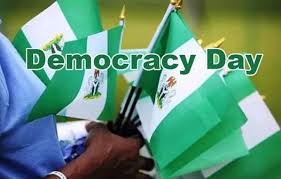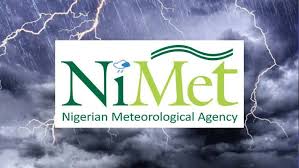Opinion
Furies At Work
Furies at work!” is a signpost that must be taken seriously by serious-minded Nigerians, who have a genuine desire to figure out what lies behind the inexplicable increasing cases of social insecurity. It is also necessary to know that the phenomenon of increasing insecurity is a global, rather than, a Nigerian affair. It is quite right that patriotic persons should show concern over the sad situation that we find ourselves, including calling relevant state authorities to organise a security summit to discuss the predicament. Furies, as the term is used here, would refer to violent entities, created artificially and sustained in their existence, by human passions, ill feelings and inner conflicts over unfulfilled longings. Such artificially created entities can also be called phantom, for they bear immaterial or invisible forms, spectral and dangerous, though illusory but alarming. Without going into the power and ability of humans to create artificial entities through emotion and thought process, it would suffice to say that such delegated power has been used for wrong purposes rather than right ones.
We have heard about step-mothers beating 5-year-old children to death and housewives pouring boiling groundnut oil on the body of a sleeping husband. Whatever excuses and provocations that may account for these acts of bestiality, the truth is that the impetus and origin of such actions often go beyond the persons giving vent to the emotional outbursts. Truly there is a valid admonition to guard our heart with all diligence, for out of it are the issues of life. In scientific academic studies there is the theory of conservation of matter, but what needs to be added here is that human passions, thoughts and volition are in the category of material substance. Thus, artificially created entities originating from humans, gather and coalesce, to form units of energy according to different kinds of human emotions that created them. Thus, the furies mentioned here represent one unit of active, energy-centre whose contents represent what violent emotion can do. Sadly, there are many of such energy-centres, existing without geographical boundaries.
Questions have been asked regarding where these artificial entities live and have their being. Without going into the structures and spheres of Creation, let it suffice to say that the earth is surrounded by an electromagnetic layer wherein every volition and emotion originating from humans, are captured and stored. Such electromagnetic band surrounding the earth serves, among other purposes, as a protection for the earth and also as a memory bank or record for everything emanating from humans. When a baby is born the blood running in the body contains elements of the child’s natural history (DNA). Therefore, the totality of human activities and emotions, individually and collectively remain conserved in a vast brain box or memory bank, irrespective of geographical boundaries. But there is such a wonderful classification system which can never be faulted or corrupted or even erased from the storage bank. With the furies as one of the innumerable contents in an invisible archive, it is to be expected that radiations from that energy-centre would flow, like lightening flash, to person or persons expressing an appeal to such centre of power. Witch!
Expression of an appeal to an energy-centre takes the form of intensive passion, long-held frame of mind or burning desire, coming from an individual or individuals having similar mindset or longing. Like prayers and supplications, individuals and groups can also make appeal which connect them with centres of energy which harbour the contents of such supplications. If, for example, in the process of engaging in a terrorist and violent act, a group of persons pray for a successful venture, such appeal goes to the furies who unleash and give added impetus to violence. Sadly, participants in violent activities would have harboured such propensity for a long time, coupled with the consumption of narcotic substances prior to operations. Whatever the motives or goals intended to be achieved in violent operations, it is the human volition which drives the action, while the furies respond and give impetus for successful operations. Mechanism of creation is such that impetuous and persistent demands coming from human volition can be granted irrespective of the nature of such demands. But there is always a price to be paid for all abuses.
Current situation in Israel, with the unleashing of violence from a terrorist group, and the reprisal following such attack, illustrates how the furies work. Mindless and without conscience, the furies are activated and deployed for service through human uncontrolled emotions. When unleashed, their violence destroy not only those who call them up for service, but also a wider circle of unsuspecting persons in the neighbourhood. Thus, the furies know no boundaries, neither do they intrude without being summoned. The mechanism of influx of violent radiation into the minds and consciousness of large groups of similar-minded people is a complex but just measure based on asking and receiving. The human volition serves as a steering rudder which determines what the mind summons for any purpose. It is quite sad that the furies can also take possession of the mind and consciousness of their devotees, including leaders of groups of people, who serve as channels for the expression of violent propensities. Humans provide the possibility of connection and expression.
The situation of overwhelming helplessness in the face of rising insecurity and criminality originates from the inability of humans to control and check their emotions and thoughts. Truly, he that ruleth his spirit is mightier than he who conquers a city. Sadly, humans judge might and valour by acts of violence, intellectual cleverness and the ability to act arbitrarily and get away with it. But real might and power lie in such knowledge which recognises the perfection of the Creator and the immutable Laws which express His Will.
Management of increasing insecurity and criminality would include and begin from managing the source of all issues of life: thought process or personal volition. Then, justice is the foundation of life, demanding that past wrongs be made right by atonement and penitence, without unleashing violence which invites the furies. How these can be managed constitutes the real test of governance – personal and state. Humanity is passing through an era of harvest and a visitation of the past, with the furies at work, to close existing cycles of liabilities. Truly, vengeance is the Lord’s!
By: Bright Amirize
Dr Amirize is a retired lecturer from the Rivers State University, Port Harcourt.
Opinion
Fighting Insecurity: Shagari’s Model
What we see across the country today can only be surmounted through a decisive Presidential agenda devoid of politics and sentiments. Alhaji Shehu Shagari, faced with similar security threats, wasted no time in restoring order.
Shagari was still in his first year in office when Islamic fundamentalists, led by Muhammadu Marwa, better known as Maitatsine, visited terror on Kano. Domiciled in the Yan Awaki area, the man who originally hailed from Cameroon, began to create an empire of terrorists.
Kano was under the control of the Peoples Redemption Party (PRP) while the National Party of Nigeria ( NPN) controlled the Federal Government. Shagari, a Muslim, did not want to be politically correct because Kano was involved. He placed national security above everything else.
Realising that the terrorists had overwhelmed the police, killing about 100 of them including a Commissioner who was moved from Aba, the president applied military force. It took just two days for soldiers to crush Maitatsine and his followers. At the end, 5,000 civilians died and the Army lost 35 souls.
That was in 1980. Shagari set up a Judicial Commission headed by Justice Anthony Aniagolu. Hundreds of the trouble makers were sent to jail. And it turned out that among them were fighters from Chad, Niger Republic, Cameroon, Burkina Faso and Mali.
On May 16, 1981, there was a skirmish at the Nigeria – Cameroon frontier. Second Lieutenant Seyiveh Sewhenu Amosu of the Nigerian Army, leading a patrol on the Akpa Yafe River, was killed in an ambush by Cameroonian forces. Four other soldiers, Felix Bemigho, Emmanuel Kasar, Joseph Imaja and Emmanuel Akpan also died.
Shagari wasted no time in showing Cameroon the power of Nigerian forces. His Service Chiefs had tasted battle during the Civil War. Chief of Defence Staff, Gibson Jalo, was a General Officer Commanding (GOC). Army Chief, Mohammed Wushishi, was part of the First Division, Chief of Naval Staff, Akin Aduwo, commanded a warship, his Air Force counterpart, Dominic Bello, was one of the few Federals that flew jet bombers.
The world watched as Nigerian forces moved to the border for war on Cameroon, whose troops had never seen battle anywhere. Having frightened the aggressor, Shagari diplomatically halted the planned assault.
In October 1982, some of Maitatsine’s loyalists, regrouped in Bulunkutu, Maiduguri. Among them were many released from jail, like what we see with Boko Haram fighters today. They burnt mosques, churches and humans, using body parts as charm. Again, Shagari acted decisively to decimate the terrorists.
On April 18, 1983, one Idris Debby, led Chadian troops to seize 21 Nigerian fishing villages. Shagari showed his stuff, once again. As Commander – in – Chief of the Armed Forces, he chose seasoned fighters, after consulting with his Defence Team.
Muhammadu Buhari, GOC of the 3rd Amoured Division was given the task of clearing the intruders. As the first governor of Borno State, the general knew the terrain so well. His mother was Kanuri, whose people knew much about Debby and the Zaghawa.
To support Buhari, Chris Ugokwe, a seasoned warrior and Commander of the 21 Armoured Brigade, led the battle. Ugokwe commanded Biafra’s 52 Brigade during the Civil War and was the officer who led 13 Armoured vehicles, under Ibrahim Babangida in 1976, to flush Bukar Dimka out of Radio Nigeria.
Ugokwe and Buhari were friends and Nigeria Military Training College (NMTC) course 5 mates. Babangida was their junior by one Course. It was because of Biafra that Ugokwe lost seniority but he was trusted by PMB and IBB. Ugokwe and Babangida were together in Kaduna during the January 15, 1966 coup.
Ugokwe drove Debby out of Nigeria and led troops into Chad. To show the strength of his Brigade, he planned to capture Ndjamena and was going to accomplish that task when Shagari, again, turned to diplomacy. The president called on Buhari to stop his troops.
That war with Chad gave the Armed Forces so much respect. The Air Force had men like Ben Ekele and Adamu Sakaba. Ekele was so good in all his training abroad that he was nicknamed ‘Air Hooligan’. His friend, Isaac Alfa, was known as ‘Air Warrior’.
Ekele played with the MiG fighter jets, like a toy. Some admirers gave him another name, ‘Ben The MiG’. Unfortunately, the officer was executed with Sakaba, in March 1986. Both were found guilty of treason by the Charles Ndiomu Military Tribunal, for their alleged roles in the Mamman Batss plot of 1985.
Shagari pushed our best into battle. Second Lieutenant Amosu, who was killed by Cameroonians, belonged to the Nigerian Defence Academy Regular Course (RC) 22. That RC later produced a Chief of Naval Staff, Dele Ezeoba, a governor, Inua Bawa, a Senator, Austin Akobundu and other prominent officers like Brigade of Guards Commander, J. O. Shoboiki, Task Force Commander, Sarkin Bello and Paul Izukanne. Another Amosu, Nunayon, became Chief of Air Staff.
President Bola Tinubu should follow Shagari’s footsteps. Nigeria is in trouble and there must be no consideration of tribe, tongue or party. Our Armed Forces can do better. We have many saboteurs in and out of power. What is paramount now is a new strategy.
The bloodletting is unprecedented. Citizens are slaughtered like chicken, daily all over the country. We call them bandits, in the North – West, killer herdsmen in the North – Central, terrorists in the North – East and Fulani herdsmen, in the entire South.
There is only one President and Commander – in – Chief. Tinubu is a strong man, cowardice is not part of his profile. He was part of the NADECO battalion that waged war on Sani Abacha. This is another war. Tinubu can and must fight like a Field Marshal.
Emeka Obasi
Obasi is an online journalist and analyst.
Opinion
Flood Disaster In Nigeria: Predictable Tragedy
Each year, Nigeria is struck by a disaster that has become so routine it barely shocks the national conscience anymore: devastating floods that displace thousands, destroy livelihoods, and cost the country billions in damages. From Lagos to Lokoja, Borno to Bayelsa, the story is the same—swollen rivers, submerged homes, lost farmland.
Children drop out of school as their homes or schools are flooded. Health crises follow, as stagnant water breeds Cholera and other waterborne diseases. Women and children bear disproportionate burdens, from increased caregiving duties to heightened vulnerability in overcrowded displacement camps.
Just last week, the country woke up to another flood disaster. Mokwa, a commercial hub in Niger State was swept away. About 200 lives were lost, 3,000 people were displaced, bridges washed away, families left heart broken.
The painful thing is that the meteorological agencies, the Nigeria Hydrological Services Agency (NIHSA) and Nigerian Meteorological Agency (NiMet) usually issue annual warnings about impending floods but little or nothing will be done by both the authorities and the citizens to avert the disaster until it happens and everybody starts running helter skelter. At a press conference in Abuja on Tuesday, June 3, the Minister of Water Resources and Sanitation, Joseph Utsev, clearly stated that flood warnings were given but they were not adhered to.
Speaking against the speculations that Mokwa flood was caused by the release of water from Kainji and Jebba Dams, he said, “Nigerians would recall that the Federal Ministry of Water Resources and Sanitation through the Nigeria Hydrological Services Agency in the 2025 Annual Flood Outlook on the 10th of April, 2025 predicted flooding in 19 LGAs of Niger State including Mokwa LGA.”
He also referred to the report of 2025 AFO, which indicated that 1,249 communities in 176 Local Government Areas in 33 States and the FCT fall within the High Flood Risk Areas, while 2,187 communities in 293 LGAs in 31 States, including the Federal Capital Territory, fall within the Moderate Flood Risk Areas.
Indeed, the floods in Nigeria are no longer unpredictable phenomena. Reports have it that in 2022, for example, over 600 lives were lost, 1.4 million people displaced, and over 200,000 homes damaged.
Crop-lands were washed away, leading to spikes in food prices and food insecurity. Infrastructure—already fragile—was further crippled. Subsequent years had similar reports. And yet, each year, State governments and citizens alike act surprised when the waters rise.
The causes of these floods are not mysterious. Climate change plays a role, with increasingly intense rainfall and rising sea levels. However, much of the devastation has been traced to human failings: poorly planned urban development, inadequate drainage systems, deforestation, and the mismanagement of river basins and dams.
For instance, the release of water from Cameroon’s Lagdo Dam annually inundates many States across the country, especially when the Dasin Hausa Dam, meant to contain the excess flow, remains incomplete decades after it was conceptualised. Similarly, urban expansion in many cities of the country often encroaches on natural floodplains and wetlands, replacing them with concrete that prevents water absorption and channels run-off into homes and roads.
Experts have claimed that at the heart of the flood disaster in the nation lies a deeper governance problem. Environmental policy is fragmented, implementation is weak, and coordination between federal, state, and local governments is almost non-existent. Flood response is often reactive—focused on rescue and relief—rather than preventive. Agencies like the National Emergency Management Agency (NEMA) and State Emergency Management Agencies (SEMAs) are underfunded and overwhelmed. There is no better truth.
How many government agencies whose job is to prevent floods and other disasters do their jobs? Just like past floods in Nigeria, Mokwa flood has been largely attributed to unregulated buildings and construction activities, poor drainage infrastructure and the likes. And the question is, whose responsibility was it to ensure that these illegal buildings were not erected in the first place? Whose duty is it to ensure that refuse is disposed of properly and that defaulters are punished?
Of course, citizens are not to be exonerated from the blame. Many Nigerians find it difficult to obey rules. Many care less about the environment and they will be the first to cry woes when a disaster occurs. But the point remains that if the regulatory authorities do not wake up to their duties of ensuring that people comply with building codes and urban development guidelines, if they would rather collect money from developers and look the other way when water channels are covered with buildings, then, the floods so far seen might just be a child’s play.
It is high time the governments at all tiers and across all levels stopped seeing floods as seasonal inconveniences rather than existential threats. These authorities are quick to make promises in the aftermath of a flood, but once the waters recede, so does the urgency. Reports are written, funds are pledged, but structural action is rare. The cycle continues: warnings, inaction, disaster, aid appeals, and then silence—until the next year. How can this help the situation?
There is an urgent need for the completion of the Dasin Hausa Dam project in Adamawa State. Experts say that this dam, if functional, would serve as a buffer for the Lagdo Dam releases from Cameroon. The same goes with the need for rehabilitation and expansion of the country’s drainage systems, especially in urban centres. Most existing systems are outdated, clogged, or simply inadequate for today’s volume of rainfall.
Building codes and urban development guidelines must be enforced without compromise. State governments must stop the unchecked development on floodplains and demolish illegal structures that obstruct natural drainage. New developments must include adequate drainage systems, and environmental impact assessments must be mandatory and rigorously enforced.
Government should carry out resettlement programmes for people living in high-risk zones. It is not enough to announce that people living along river banks and flood prone areas should move to higher lands. Are provisions made for them to move and to settle on higher lands?
Also, early warning systems must go beyond press releases and scientific bulletins. They must translate into community-level awareness and preparedness. NEMA and SEMAs should partner with local governments, traditional institutions, and civil society to educate the public on flood risks and evacuation plans.
Community-based disaster response teams can be trained and equipped to act swiftly when floods occur. More importantly, simulations and drills should be conducted periodically, not just after disasters strike.
It is also important that the government, both state and federal, collaborate with the private sector to introduce subsidised flood insurance scheme, especially for farmers and small business owners who bear the brunt of flood damages.
Climate change is no longer an abstract threat; it is a daily reality. Federal and state governments must integrate climate resilience into all development policies. Ministries of Environment, Works, Water Resources, and Agriculture must collaborate to build climate-smart infrastructure.
This also includes reforestation projects, sustainable agriculture practices, and policies to reduce carbon emissions. Nigeria’s national climate adaptation plan must be updated and fully implemented, with budgetary allocations that reflect the seriousness of the problem.
Transparency in the use of emergency funds and infrastructure budgets is essential. Anti-corruption agencies should investigate diversion of funds meant for disaster preparedness and flood mitigation.
Nigeria’s flood disaster is now a national emergency that requires urgent, collective, and sustained action. We can no longer afford the complacency that treats annual floods as inevitable. The science is clear, the patterns are consistent, and the solutions are known. What is missing is the will to act.
A flood-resilient Nigeria is possible. It begins with planning, continues with investment, and is sustained by accountability. We must break the cycle of annual disaster and move toward a future where the rainy season is a blessing, not a curse.
President Bola Tinubu must be commended for approving the release of ?2 billion, 20 trucks of rice for victims. That will go a long way in helping them if they are not diverted by those in the chain of their release and distribution.
Calista Ezeaku
Opinion
AI And Transformation of Nigeria’s Education
The increasing advent of technology is slowly, but evidently taking over major sectors in the world today, but not so much in Nigeria. Education is the backbone of any country, especially if it is one that hopes for the better future of its youths and the growth of the country at large.
Despite the known fact that education is key to national development, Nigeria’s education sector seems to be buckling under pressure ranging from a limited access to quality learning resources, poor school infrastructure, and overcrowded classrooms, among others.
It does not end there as many educators lack the digital literacy to properly use these tools. Proper strategies, digital literacy training and a focus on providing proper infrastructure in schools are the barriers that need to be tackled to surmount this challenge. Addressing these issues first would pave way for Artificial Intelligence (AI) integration in schools.
Though, AI is more than technical jargon, it just might be what Nigeria needs to level the playing field, especially since it looks like we are being left behind with all the innovation technology has brought along. With its personalised features, teachers can tailor lesson plans based on each student’s weaknesses which would positively affect learning outcomes. Imagine a school in Kano, where students learn English through AI-powered applications and resources. It would give better opportunities for the teacher to have more time to give them more personal attention.
However, to fully realise these benefits, there are certain underlying issues that AI can easily tackle, especially those in rural areas, where there is lack of electricity, proper ICT tools, and internet connectivity.
A United States based publication, EdTech, noted that there is an increasing strain in the ability of teachers to carry out their occupational demands with planning lessons, meeting parents and guardians, and other administrative responsibilities.
However, according to Carnegie Learning, teachers who have embraced AI have seen notable changes in students’ outcome and their work flow. In their research, 42 per cent found out that using AI reduced time spent on administrative duties, 25 per cent noted that AI was particularly useful in assisting with personalised learning, and 18 percent of them reported an increase in students’ engagement. Only one percent could report no change at all with the use of AI in the classroom.
Notably, the United Nations Educational, Scientific and Cultural Organisation (UNESCO), highlighted the potential of AI to address challenges in education, and its ability to innovate teaching and learning, as long as it is deployed safely and ethically. This connotes that every good innovation has a negative downside, and Artificial intelligence is not without.
According to UNESCO, well thought out strategies to maximise the use of AI in classrooms is what our education sector needs. I believe that as a nation we need to set policies that are channelled towards AI integration into the education system, and more importantly, all hands should be on deck to facilitate its process.
Teachers as well as students have a role to play in ensuring that it is not misused and rendered a vice. If we do not integrate AI soon enough, the learning gap between Nigeria and other nations will continue to widen, as it is already the case for most sectors of the country. This gap would not only widen, but it would go on to affect our youths who will be left behind in the global workforce.
Though, schools are known to be institutions of socialisation, where teachers play a major role in shaping the minds and outlook of the students in the classroom, I do not see AI as a replacement for teachers and evidently cannot take the job of educators. Additionally, the World Economic Forum noted that while AI can enhance the learning processes, it cannot replicate the human element that is needed by every student – that which is provided by teachers.
Therefore, AI is not a threat to teachers; rather it is a partner that benefits not just the teachers, but the students as well. It is important that policy makers move to develop and implement policies that integrate AI into the education system in Nigeria. The earlier we embrace this innovation, the better it will be for the future of every child.
Eniola Shobiye
Shobiye, a student, writes from the University of Ilorin.
-

 News5 days ago
News5 days agoFIRS Introduces New SOP To End Tax Confusion Nationwide
-

 Sports5 days ago
Sports5 days agoBrazil Edge Paraguay, Book W’Cup Spot
-

 News5 days ago
News5 days agoJune 12: Stakeholders Rate Nigeria’s Democracy Low
-

 News5 days ago
News5 days agoLearn How To Form Coalition Party From Tinubu, Sowunmi Tells Atiku
-

 Sports5 days ago
Sports5 days agoConcacaf Opposes 64-Team W’Cup Plans
-

 News5 days ago
News5 days agoNiMET Forecasts Three-Day Thunderstorms, Rain In Rivers, Edo, Others
-

 Sports5 days ago
Sports5 days agoBAL: Hoopers Coach Makes Excuses After Coming Short
-

 Sports5 days ago
Sports5 days agoGyokeres Situation, Transfer Under Cloud At Sporting

